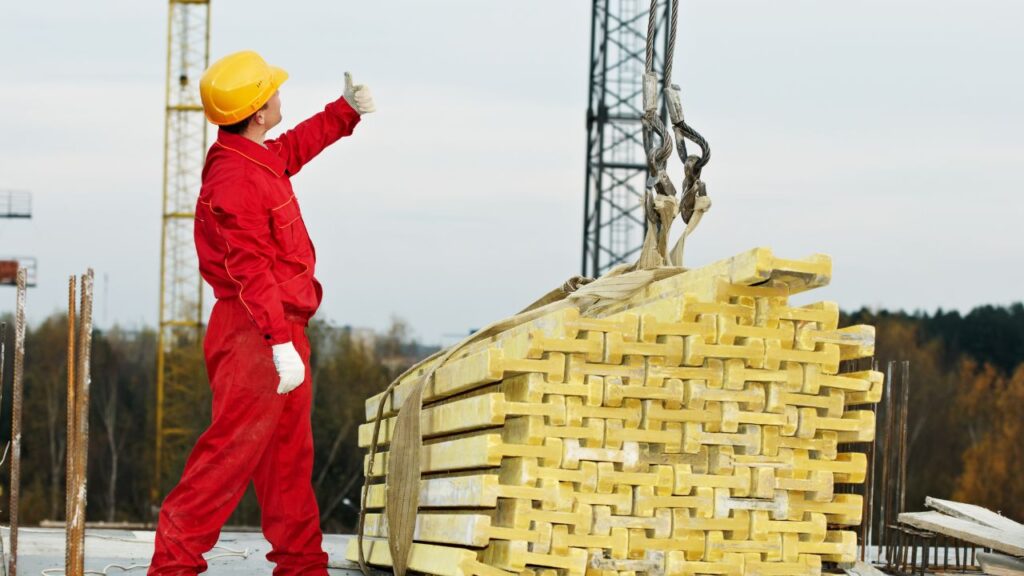While hoisting and rigging are necessary on many construction sites, serious injuries and risks or even fatalities can occur if hoisting and rigging procedures are not followed. So, it is essential to follow safety work practices for hoisting and rigging.
Hoisting and Rigging Safety Talks help in providing reminders to workers about the awareness of the hoisting and rigging hazards and how to follow safety procedures in order to ensure the overall safety of the employees .

Here, we’ll explore critical points in these crucial safety discussions.
1. Be aware of the Hoisting and Rigging Hazards
Hoisting and rigging tasks are inherently risky. Awareness of the hazards is the first step toward prevention. Common injuries include:
- Sprains and Strains: Often due to improper lifting techniques or overexertion.
- Crush Injuries: These occur when workers are caught between equipment or loads.
- Electrocution: Particularly from contact with overhead power lines or faulty equipment.
- Falls: Resulting from working at heights or tripping over equipment.
- Struck-by Incidents: Being hit by falling or swinging loads can cause serious harm.
Despite taking precautions, incidents can still happen, so ongoing awareness and education are critical for Hoisting and Rigging safety.
2. Proper training to prevent Rigging fatalities
Training is fundamental for Hoisting and rigging safety operations or Rigging procedures. Every worker involved in these potentially dangerous activities, whether handling equipment or assisting with crane operations, should undergo comprehensive training in order to prevent serious injuries and fatalities. This training should cover:

– Proper lifting techniques to prevent musculoskeletal injuries.
– Safe rigging practices to ensure loads are secure.
– Emergency procedures related to accidents or equipment failure.
– Regular refresher courses to keep knowledge current.
3. Maintaining Awareness on the Site
On a busy construction site, situational awareness can prevent many accidents. Workers should always:
- Be aware of their surroundings and the location of other workers and equipment.
- Communicate effectively with their team, especially during complex lifts.
- Keep an eye out for changes in weather conditions that might impact safety.
Mistakes often happen when workers become complacent or distracted; therefore, vigilance is vital at all times
Also Read: Online Worker Safety Awareness Training
4. The Role of Written Plans in Hoisting and Rigging Operations
Having a clear, written plan for each project is essential. These plans should outline:
- The sequence of operations for lifting and rigging procedures
- The roles and responsibilities of each team member.
- Detailed safety protocols and procedures to follow.
- Emergency response plans in case something goes wrong.
A well-thought-out plan helps ensure everyone is on the same page, reducing confusion and enhancing safety.
5. Standing Clear: A Simple but Crucial Rule
One of the most straightforward yet important safety rules is standing clear of lifting loads. All workers should be firstly aware of the hoisting and rigging hazards and must follow the below mentioned tips:
- Stay out of the fall zone, the area directly beneath the load.
- Avoid walking under suspended loads.
- Communicate clearly with the crane operator and rigging team.
Workers can significantly reduce incidents like serious injuries and fatalities their injury risk from falling or swinging loads by maintaining a safe distance.
Hoisting and Rigging Safety relies heavily on awareness, safety training, and clear communication. Regular toolbox talks covering these key points can help keep safety at the forefront in everyone’s mind.
Ready to Learn More?
If you’re ready to learn more about safe operations at the workplace, look no further than our training courses at Act First Safety.
If you’re ready to book, then we’re ready to welcome you! Please contact our office at 416-283-7233. Here’s where to start your next step!



